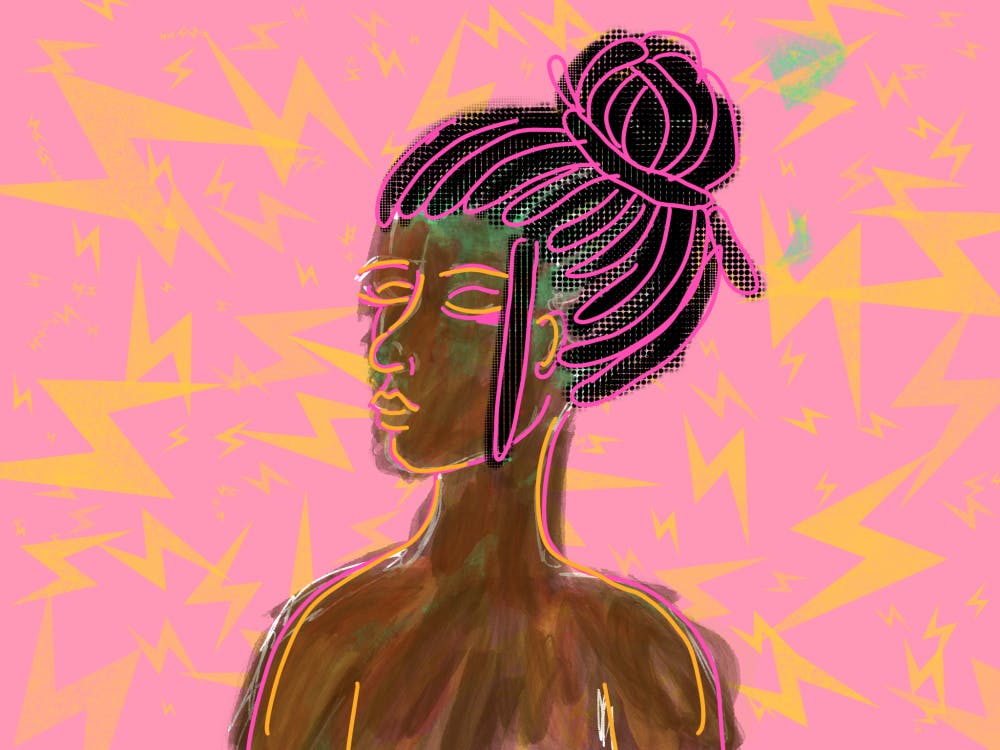However you wear it, it is likely these threadlike strands on your head do much more than protect your scalp or regulate the temperature of your head. It is often deeper than a ponytail or a cute curly cut. Hair creates a cultural identity for many.
Yet, some are shamed for expressing themselves with their hairstyles.
Hair discrimination is not a new phenomenon. It typically targets black people, with thick, afro textured hair. This dates back to the Atlantic slave trade when Africans were forcefully brought over to America. Once they arrived, owners shaved slaves heads as a way to strip them from any sense of social and cultural identity.
Once their hair grew back, many women were forced to wear a headwrap.
According to The Perception Institute, “good hair” is a term used to describe wavy, straight and soft hair. Typically, those are Eurocentric characteristics. This stereotype creates the idea that any different hair type is “bad.”
Every hair type should be celebrated. Everyone has a beautiful blend of different textures, patterns and colors that make them unique.
In 2016, The Perception Institute researched bias and discrimination towards natural hair of black women. The organization measured the bias of both black and white women.
The survey found that white women rate black textures hair as less beautiful and professional. Additionally black women have a social stigma against textured hair, because of the white women’s devaluation of textured hair. While the survey specifically assessed white women, it is likely white men contribute to the stigma.
The survey also addressed social implications with hair. For example, twice as many black women feel pressure to straighten their hair than white women.
These social implications have affected women and girls in professional places time and time again, even to the point of punishment.
In 2018, an 11-year-old Louisiana student was sent home from school because her hair extensions broke a rule. The schools had a policy preventing extensions, clip ins and weaves.
In a Facebook post, the girl’s brother said the extensions make her natural hair easier to maintain.
Schools are not the only places where this social discrimination is occurring.
Earlier this year, journalist Brittany Noble was reportedly fired as a result of workplace discrimination. According to a post to her Instagram, Noble was told her natural hair was unprofessional. In a personal anecdote Noble said coworkers asked questions such as: “Why doesn’t your hair lay flat?”
In 2010, Chasity Jones went to a job interview for a call center. She arrived at the interview with short, natural dreadlocks. Shortly after, an HR manager said she couldn’t wear her in dreads to work because they “tend to get messy.”
Some states have made progressive steps in addressing the issue of hair discrimination.
This summer, California governor Gavin Newsom signed a bill banning racial discrimination based on hairstyle. The law works to protect hairstyle laws that disproportionately affect people of color. The CROWN Act has a meaning that reflects the name: creating a respectful and open workplace for natural hair.
New York Gov. Andrew Cuomo signed a similar bill into law. The bill amends sections of the Human Rights Law and Dignity for All Students Act to include protection of "traits historically associated with race, including but not limited to hair texture and protective hairstyles."
These bills are positive steps towards creating change, but more states need to follow suit. We must ensure people are not discriminated against for embodying their culture or natural self through hair.





